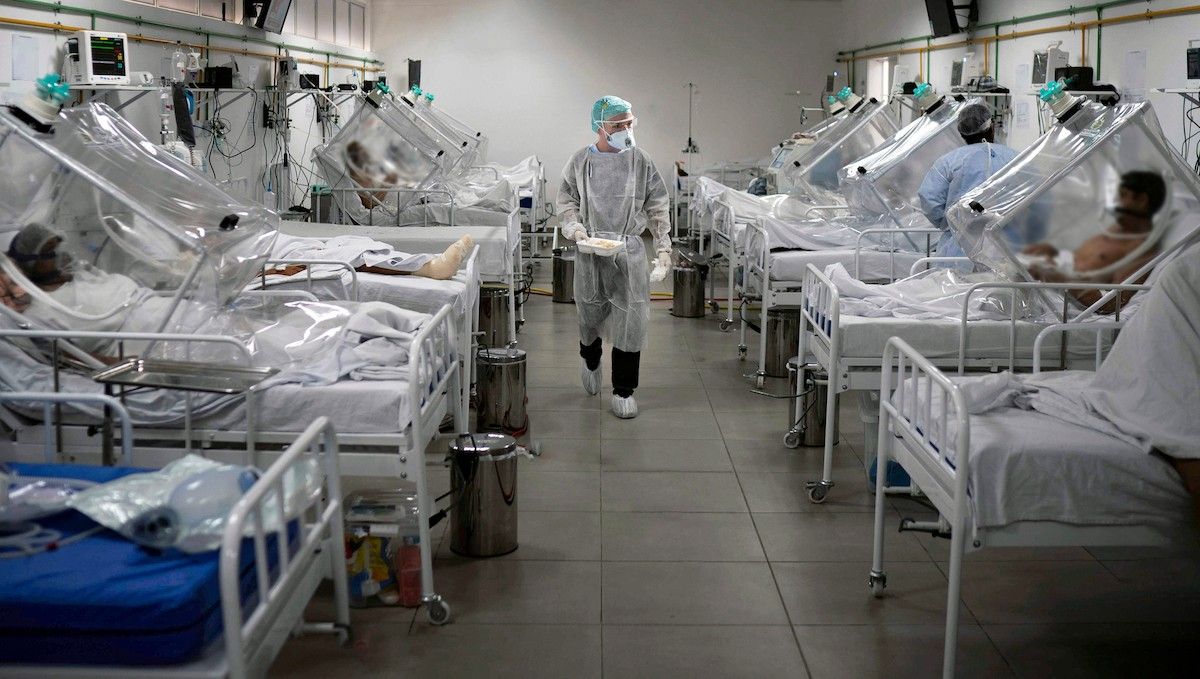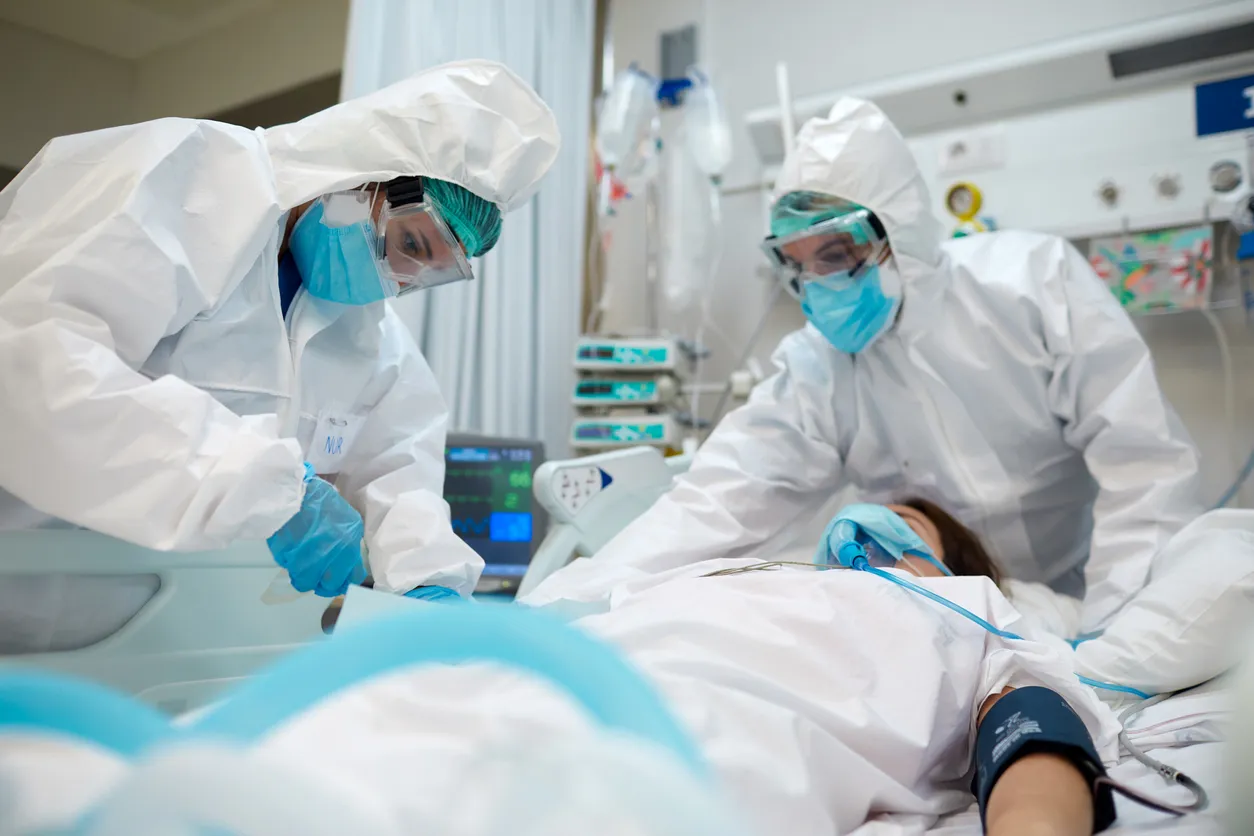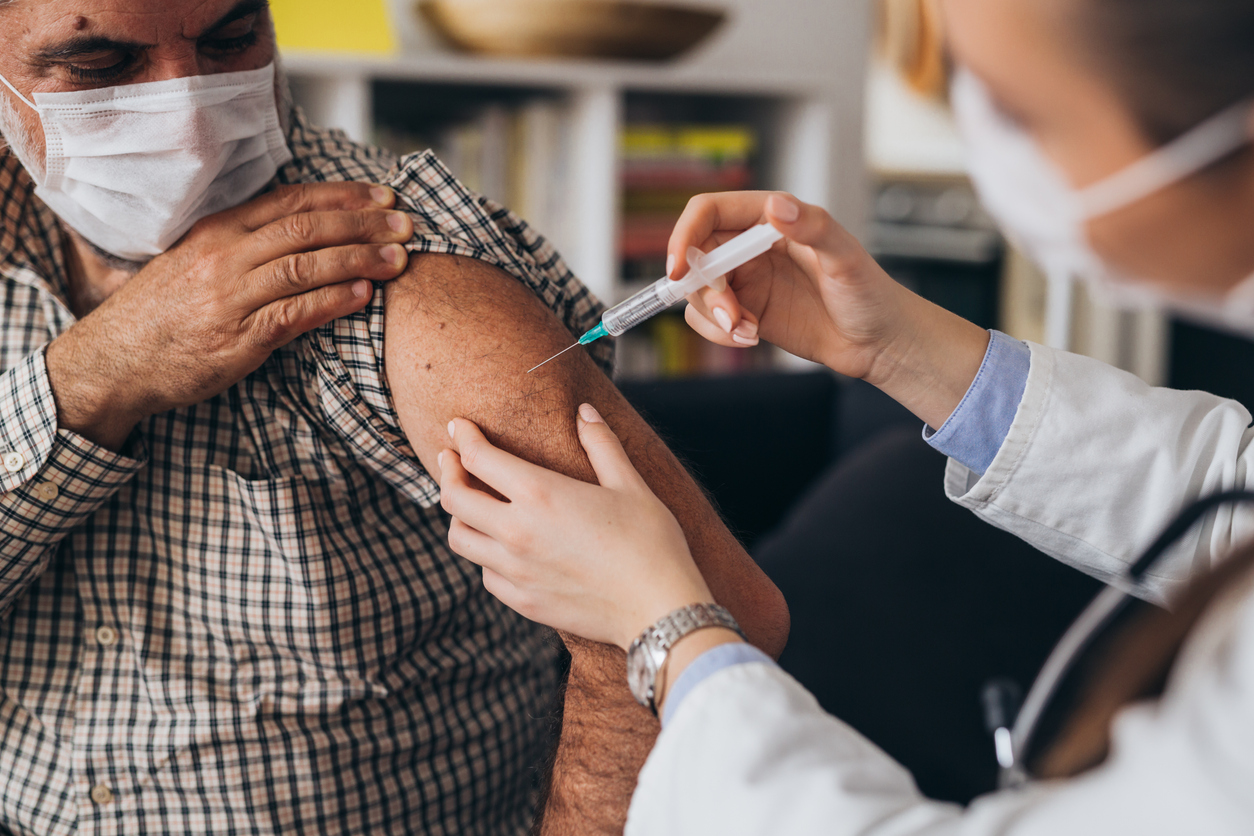The quickening pace of the novel coronavirus’ spread has already alarmed public health officials and medical experts, with 60 percent of the cases in the U.S. having been reported since Election Day on Nov. 4, according to CNN. But according to a forecast released by the CDC on Jan. 15, the highly transmissible U.K. strain of the variant, formally known as B.1.1.7., will likely become the dominant strain of the virus in the U.S. by March and that means even more “rapid growth in early 2021.” Read on to see why the CDC says it has cause for concern and for more on getting the most out of your PPE, check out The CDC Warns Against Using These 6 Face Masks. Incoming CDC director Rochelle Walensky, MD, who has been selected by President-elect Joe Biden to head the agency, recently shared the CDC’s prediction that another 100,000 people may die in the next month alone, which would bring the total death toll in the U.S. to half a million. During an interview with CBS News’s Face the Nation on Sunday, Jan. 17, Walensky said: “By the middle of February, we expect half a million deaths in this country. That doesn’t speak to the tens of thousands of people who are living with a yet uncharacterized syndrome after they’ve recovered. And we still yet haven’t seen the ramifications of what happened from the holiday travel, from holiday gathering, in terms of high rates of hospitalizations and the deaths thereafter. I think we still have some dark weeks ahead.” And for more on how the pandemic is affecting where you live, check out This Is How Bad the COVID Outbreak Is in Your State. Other experts point out that just because numbers appear to be leveling out, we’re still likely to see an increase in hospitalizations and deaths in the coming days—and soon, the variant will cause cases to climb once more. Also appearing on Face the Nation on Jan. 17, Scott Gottlieb, MD, the former commissioner of the Food and Drug Administration (FDA), explained: “We’re seeing a near-term peak in terms of the number of new daily cases. Now, unfortunately, deaths and hospitalizations will continue to grow over the next two or three weeks because they’re a lagging indicator. But we’ll see continued declines probably for about four weeks, maybe five weeks until this new variant starts to take over.“ae0fcc31ae342fd3a1346ebb1f342fcb According to Gottlieb, the new U.K. variant currently accounts for about 0.5 percent of all infections in the U.S. “There’s hotspots in Southern California and Florida that may be closer to 1 percent, but it’s going to double every week. So it’s about doubling every week. That’s the experience from other countries and that’s the experience we’ve seen so far in the United States. So it’s 1 percent now. It’ll be 2 percent, then 4 percent, then 8 percent, then 16 percent, then 32 percent. So in about five weeks, this is going to start to take over,” Gottlieb warned. And for more on where this new strain has been discovered, check out The U.K. COVID Strain Is Now in These 15 States. Recent figures show that despite the fact that we saw a significant dip in coronavirus cases, the U.S. still experienced a staggeringly high weekly average of about 207,000 new daily cases. “The virus has established itself in the human population and it’s not going anywhere,” Amesh Adalja, MD, an infectious disease expert with Johns Hopkins University, told CNN. “We’re going to see a lot of transmission until we cross the threshold for herd immunity.” And for more on the states that are still in the thick of it, check out These Are the Only States Where COVID Is Still Surging. Despite more potentially grim news in the coming days, Walensky also expressed optimism that improved vaccine rollout could help finally bring outbreaks under control. “We are confident that we have enough vaccine for the 100 million doses over the next 100 days. That is what the President-elect has promised,” she explained on Face the Nation. “It will be a hefty lift, but we have it in us to do that. And in order to do that, we have to look at the supply for sure. We have to titrate and make sure that there are enough people getting vaccinated, but not too many as to overwhelm the system.” Walensky added that in order to get doses administered to more of the public, “we have to make sure that there are enough vaccinators. I know that the President-elect has committed to use the Defense Production Act to make sure that where there are any bottlenecks in that supply, we will, you know, address those bottlenecks.” And for more on preparing to get inoculated, check out If You Take These OTC Meds, You Have to Stop Before Getting the Vaccine. Keep reading more on Best Life. RELATED: If You’re Lacking This One Thing, You’re at Greater Risk of Long COVID The Easiest Way to Tell If You Have COVID Before Symptoms, Study Says Doing This to Your Mask Could Keep You Even Safer From COVID, Experts Say



